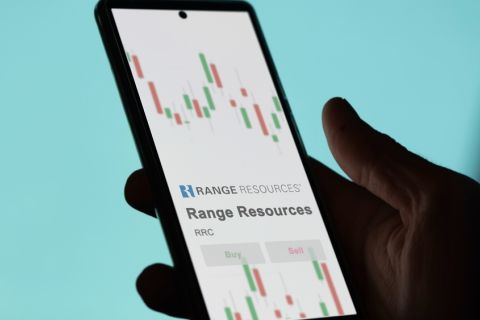With oil and gas prices high and interest rates low, more and more investors are discovering the value of buying royalties. And as these new entrants push up the prices for smaller deals, some established royalty buyers are focusing on larger deals where there is less competition and there appears to be more value. "You're trying to be one step ahead of the people who will overpay," says Scott Noble, founder of Dallas-based Noble Royalties Inc. And stay ahead of buyers that may be in the market because they can finance their purchases, not because what they're buying are great properties. "They can borrow [money] low-cost and hedge it out." Looking at the pace of activity at property auction-houses, where many smaller royalty packages are sold, it's apparent that the market is becoming increasingly competitive. Ron Barnes, senior vice president of business development for The Oil & Gas Asset Clearinghouse, says average prices for royalty packages on a basis of dollars per barrel of oil equivalent (BOE) per day have nearly tripled since 1999 at Clearinghouse auctions. Part of the growth in royalty sales and the values achieved for individual properties is, of course, market conditions, including commodity prices. Another factor is the increased popularity of auctions and that higher-quality properties are being offered in that format, Barnes says. And, the competitiveness of buyers is definitely a factor. "There are more-and more knowledgeable-royalty buyers out there," Barnes says. Last year, the Clearinghouse sold $78 million in royalties, compared with about $33 million in 2002 and $26 million in both 2000 and 2001. From 1997 to 1999, royalty-buying companies could find small deals at good prices, Noble says, but when returns on public stocks began to decline, excess money began to flow into the royalty space. "Investor money, equity money and Wall Street money were all going to the energy sector because everything else was falling apart," he says. "As excess money ran into small purchases, it was not cost-efficient to buy them." So from 1999 to 2001, Noble began focusing on bigger deals-in the $1- to $6-million range-and discovered there was much less competition in this space. It found itself bidding against maybe three other potential buyers, rather than 300. Beginning in 2003, Noble began pursuing deals in the $10- to $20-million range, and closed $40 million of purchases. "We doubled our size in the first five years. We doubled it again last year alone," Noble says. Meanwhile, Houston-based Black Stone Minerals Co. LP. has long focused on even larger deals, often with a large nonproducing mineral acreage component. In 1992, Black Stone's predecessor, Black Stone Minerals (BSM), bought $23.2 million of mineral and royalty interests from Santa Fe Energy Resources, which more than doubled its holdings on the upper Gulf Coast. In 1998, after an active period in the exploration, development and sale of its working-interest properties, BSM and three associated partnerships were merged to form the existing firm. As a part of its new strategy, the partnership implemented a long-range plan to diversify its holdings away from the upper Gulf Coast, and spent nearly $100 million from 1999-2001 on six major packages. Capital was sourced from internally generated funds and modest leverage. In 2001, the partnership decided it would like to continue pursuing large deals, but without relying entirely on Black Stone's balance sheet. So, with individual and institutional investors, it formed a $150-million fund-Black Stone Acquisition Partners I-in which Black Stone Minerals Co. LP is a limited partner. Through this fund, Black Stone purchased in September 2002 substantially all of the fee minerals, royalties and overriding royalty interests owned by Ocean Energy. In January it spent $45 million on the U.S. mineral and royalty assets of Toreador Resources Corp., Dallas. G. Thomas Graves III, Toreador president and chief executive, says a number of North Texas royalty owners are receiving good prices for their minerals and royalties. But, in Toreador's case, the royalty portfolio was confusing to its investors. "They saw us as an E&P company, and saw a dichotomy between the two disciplines," he says. "We talked about [the royalty portfolio] as an annuity. The Street saw it as an undeveloped asset." Douglas W. Weir, Toreador senior vice president and chief financial officer, says the goal was to receive a fair price for the royalties and from a buyer that could handle the enormity of the transaction. The properties were under mortgage by Toreador's senior lenders, adding another layer of complexity to the deal. "We were dealing with 1.4 million net mineral acres and about 4,000 wells," Weir says. "For a transaction of this size and complexity, I have never seen anything go as smoothly." The emphasis on outrunning the competition does not negate the fact that royalty buyers must pay fair market value, Noble says. "If you're known as a lowballer or cheapskate, people won't do deals with you," he says. "You have to pay fair market value if you want to be in this space long-term." For years, he says, some buyers would bid high for a royalty package, then renegotiate a lower price later. These firms would find fault with the technicalities of the deal if they couldn't renegotiate the acquisition price. "That won't go over now." What's in store for royalty companies in the future? At Black Stone, a second fund-this one $300 million-is being formed for fee mineral and royalty asset purchases, says Marshall Eubank, vice president, business development.Black Stone dipped into this new fund in March, when it struck a deal to buy all of the upper Gulf Coast producing and nonproducing fee mineral and royalty assets of Pure Resources for $192.4 million. The properties are in Mississippi, Texas, Alabama, Louisiana, Oklahoma, Florida, Arkansas, Pennsylvania, Michigan and New York. They comprise about 5.6 million gross acres, or 3.3 million net acres, and include royalty and overriding royalty interests in about 1,100 wells with net daily production of 13.5 million cubic feet per day on a gas equivalent basis. Black Stone now owns about 13 million gross acres, including this purchase, which is expected to close in June. At Noble Royalties, the founder hopes to keep pursuing larger and larger purchases. At press time, he was negotiating a $77-million deal, and had $170 million worth of prospective transactions to review that were brought to him at the NAPE expo in February. He estimates he will close $40- to $60 million of these deals. Over time, interest rates will rise, Noble says, forcing some of the smaller buyers out of the market. MINERAL VS ROYALTY There are some significant differences in what constitutes a mineral or royalty interest, and some equally important differences in the strategies of companies that purchase them. • Mineral interests and royalty interests both involve ownership of minerals under the ground, and both receive portions of the income from the production of oil and gas. However, mineral interest-owners may execute leases and collect bonus payments. Royalty interest-owners do not execute leases or collect bonus payments. • Overriding royalty interests do not involve ownership of minerals under the ground. Instead, they constitute ownership of a portion of generated revenues from oil and gas production. • Overriding royalty interests expire when production on a lease has stopped. • Mineral and royalty interest-owners maintain their ownership after production stops. A large part of the strategy at Black Stone Minerals Co. LP is to execute leases on its properties, and it promotes a producer-friendly attitude. "We lease to ExxonMobil and Anadarko, all the way down to small independents," says Marshall Eubank, vice president, business development. Black Stone has an in-house exploration and technical team that helps generate activity in its larger mineral-holding areas. It's willing to negotiate on its lease form, and will even craft creative transaction structures with potential customers that are interested in fee minerals that have not been leased in a while. Noble Royalties has very little ownership in the executive and mineral rights side of the business, which Noble says is more labor-intensive. It sticks to the "easier to manage" royalty and overriding royalty interests. This requires Noble to evaluate its operators more carefully. "In the end, we all choose a specific area and a specific operator that we feel will perform in line with historical data," Noble says. "The operators manage our assets while we manage and disburse the royalty income derived from that asset. It is a great bottom-line business."
Recommended Reading
Tech Trends: Halliburton’s Carbon Capturing Cement Solution
2024-02-20 - Halliburton’s new CorrosaLock cement solution provides chemical resistance to CO2 and minimizes the impact of cyclic loading on the cement barrier.
To Dawson: EOG, SM Energy, More Aim to Push Midland Heat Map North
2024-02-22 - SM Energy joined Birch Operations, EOG Resources and Callon Petroleum in applying the newest D&C intel to areas north of Midland and Martin counties.
Range Resources Expecting Production Increase in 4Q Production Results
2024-02-08 - Range Resources reports settlement gains from 2020 North Louisiana asset sale.
Sinopec Brings West Sichuan Gas Field Onstream
2024-03-14 - The 100 Bcm sour gas onshore field, West Sichuan Gas Field, is expected to produce 2 Bcm per year.
TotalEnergies Restarts Gas Production at Tyra Hub in Danish North Sea
2024-03-22 - TotalEnergies said the Tyra hub will produce 5.7 MMcm of gas and 22,000 bbl/d of condensate.





